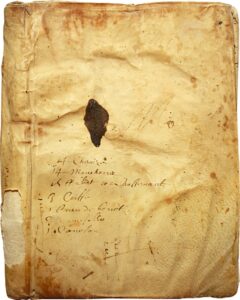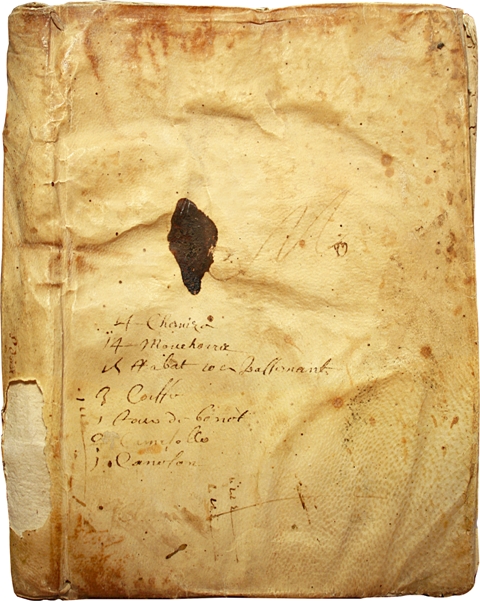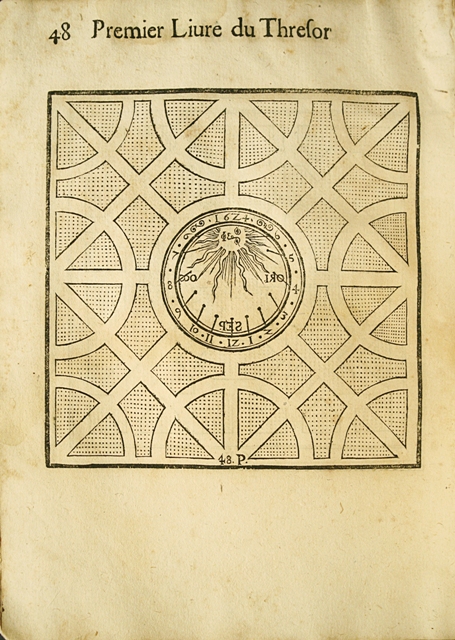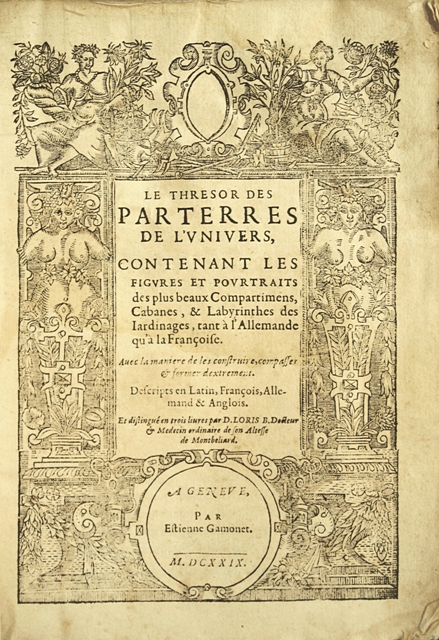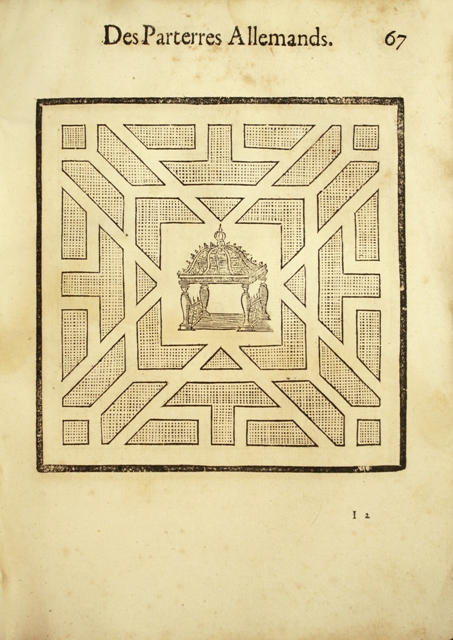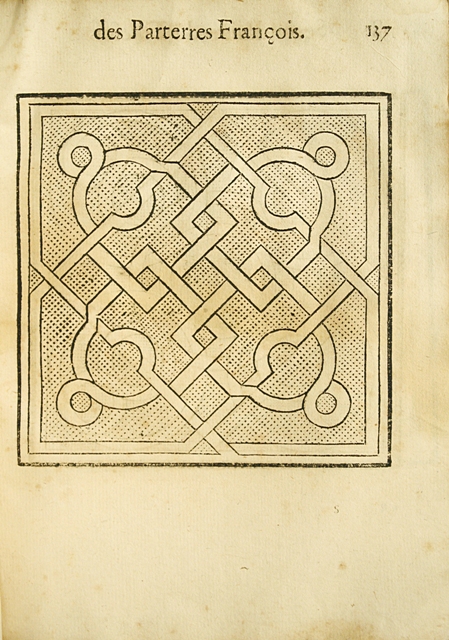A Genève, par Estienne Gamonet, 1629.
4to [218 x 155 mm] of 28-200 pages decorated with 195 woodcuts of beds, compartments and mazes, foxings. Bound in full vellum, old handwritten inscriptions on the covers, small lack of vellum on the spine, sprinkled edges. Contemporary manipulated binding.
Rare and very precious first edition printed as soon as 1629 in Geneva and presenting, remarkably, the text on gardens and mazes printed in four languages: French, English, (prints in English of this time are uncommon), German and Latin.
“Historians on ancient gardens often refer to the engravings of the Thresor des Parterres de l’Univers. It is one of the first model books dedicated to “flowerbeds” and, it seems, the largest collection of “pourtraits” (portraits) drawn in characteristic style of Renaissance.” “In the early XVIIth century, Montbéliard’s Würtemberger enclave is an important crossroad between the Latin and German linguistic areas. Montbéliard is a Protestant town and sermons are in German in the castle’s church and they are in French in Saint Martin’s church. So, the redaction of the Thresor in Latin, French, English and German contributes to the Würtemburger aspect of this work. Competition between French and German cultures has without a doubt influenced the classification of the “Flowerbeds” chosen by Daniel Loris. Indeed, he distinguished the “French Flowerbeds” from the “German Flowerbeds”.”
“Daniel Loris is a doctor when he publishes his ornaments collection. This profession is deeply linked to horticultural practices, because many medicinal plants are cultivated in aristocratic gardens. As it is indicated in the dedicatory epistle, the author is serving the dukes of Würtemberg, counts of Montbéliard.” The book of garden models by Daniel Loris is the result of a project where the author, not interested in vegetables mainly studied by his predecessors, dedicates himself to decorating the plots where they are cultivated.
“At the beginning of the XVIIth century, the creation of a princely garden requires botanical and architectural skills. A view of Leonberg’s “Pomeranzengarten” that he drew came to us, the garden is composed of eight “Compartments” of a style named “Parterres de carreaux rompus” (Flowerbeds of broken tiles) by Charles Estienne and Jean Ribault (1582-83) and “German Flowerbeds” by Daniel Loris. A comparison between the ornaments of the “Pomeranzengarten” (1609) reveals similarities in the composition. However, no pattern of the duchess of Würtemberg’s garden view is directly visible in the model book, Daniel Loris’s “pourtraits” being generally more complex – maybe the result of two decades of experimentations. However, they are close to the Maison Rustiques’s models (1582-83) by Charles Estienne and Jean Ribault – even though other solutions of the “Thresor”, such as the “couronnes” (crowns), seem new. The “Parterres” du “Thresor” are therefore more sophisticated and diversified that in the previous sources. On the other hand, in the German Protestant Princes’ lands, sources testify of an attachment to the Renaissance tradition of the garden that seems to linger in the XVIIth century. Indeed, ornamental solutions similar to Daniel Loris’s ones are visible in the “Architectura civilis, Architectura recreationis” by Joseph Futtenbach (Augsbourg, 1640) and in the “Architectura Curiosa Nova” by Georg Andreas Böckler (Nuremberg, 1664). As to the abstract interlace patterns of the Thresor, they are called “Parterres François”, an outmoded but not illegitimate name. Indeed, the use of interlace for drawing flowerbeds is experimented and generalized in France before the arabesque, in the second half of the XVIth century at a time when Italian models are already less predominant. The first models from Italy are different, they are the “broken tiles flowerbeds” – one of the first representations that has come to us is in Sebastiano Serlio’s “Regole generali di architectura ou Quarto Libro” (1537).
At the end of the XVIth century, the “Broken tiles Flowerbeds” decorates the gardens in Europe and contributes, as it seems, to define an “international style” of the Renaissance garden. Mazes form the third kind of flowerbeds in the “Thresor”, the most used layout being the one of mazes without forks: a layout directly inherited from the medieval churches’ pavements. The “Thresor des parterres de l’Univers”, which doesn’t mention the first baroque gardens’ flowerbeds, and compile a consequent number of ornamental propositions adapted to the needs of a German public, is a remarkable testimony of this period.” Laurent Paya –(Ecole Nationale Supérieure d’Architecture) – 2006.
This first edition has always aroused the interest of public and private international institutions, thus we have located seven copies in American libraries and several in European libraries, but it disappears little by little from the private market; in the last thirty years I have only located one copy on the international public market with a binding from the XXth century by Pagnant, initially defective and completed with several short-margined leaves, it was sold in this condition for 14 000 € 11 years ago (Couturier/Nicolay, April 3rd 2000 sale).
